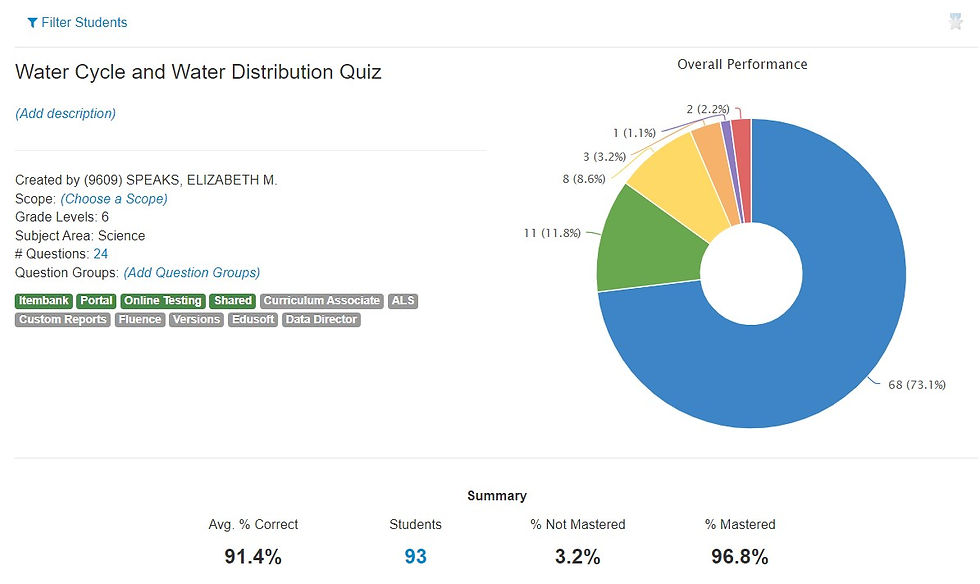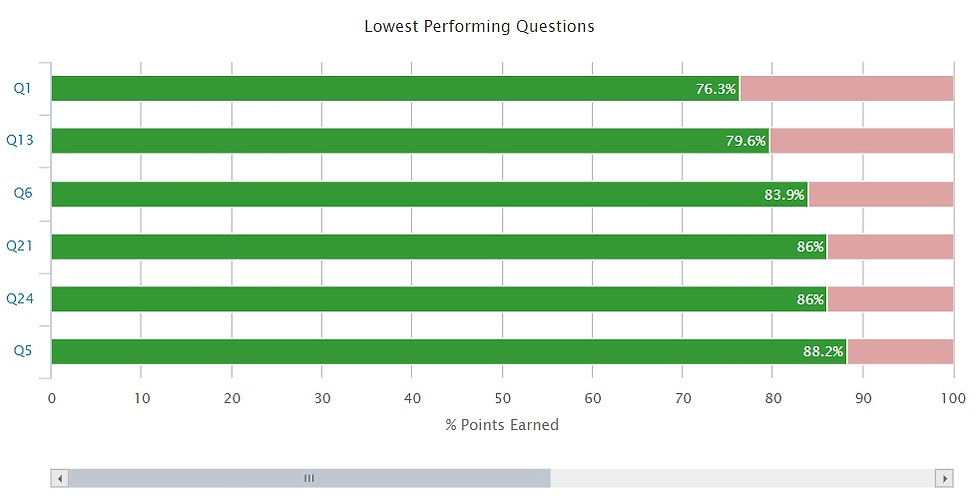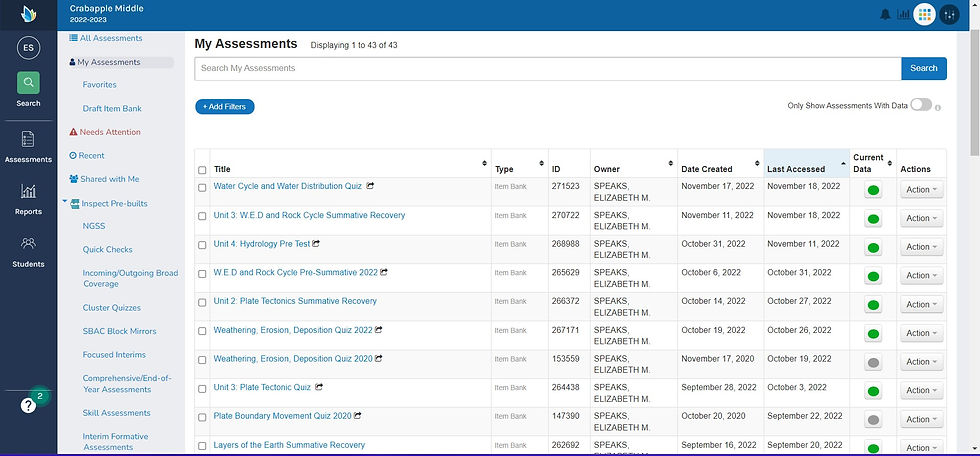top of page
7.1/7A ALTERNATIVE ASSESSMENT
Candidates provide alternative ways for students to demonstrate competency and reflect on their learning using technology. (PSC-IT 7.1, ISTE-E 7a)
7.1
The artifact I have selected to demonstrate mastery for this standard is a summative Rock Cycle RAFT project that I created for 6th grade Earth Science students. RAFT stands for Role, Audience, Format, and Topic. The RAFT link contains the project description, directions, and student choices. I have also linked the project rubric, a prewriting graphic organizer, project checklist, and peer feedback forms.
The artifact demonstrates how I provide alternate ways for students to demonstrate competency using technology. This is a summative project that gives students that ability to choose so many creative ways to demonstrate their understanding of the rock cycle standards. Instead of taking a multiple choice test, students can turn into a news reporter giving a news broadcast, a rock blogging about their life, an author sharing a short story, or a geologist giving a presentation. Students utilized Microsoft Word, PowerPoint, Publisher, and iMovie. These are varied tasks, but they all measure the same the same standard.
This artifact demonstrates how I provide alternative ways for students to reflect on their learning using technology. I often have students reflect on their learning through peer feedback. Students take more ownership of their work when they know their peers will be looking at it. I provide time for students to provide and view peer feedback. Receiving authentic peer feedback allows students the opportunity to reflect on their learning and their work to see what else can be done for improvement.
I learned that students need to be taught how to give good constructive criticism in order to better help their peers. I would update and improve the quality of this artifact by creating and including a spreadsheet to help me better manage and monitor student progress along the way. This would help prevent anyone from getting too far behind.
The work that went into creating this artifact improved student learning. Students were very engaged as they learned new ways to present information they learned. The impact could be assessed through my daily classroom observations, by the products the students generated for that project, and by other projects and activities done during that year.
7.2/7B FORMATIVE & SUMMATIVE ASSESSMENT
Candidates use technology to design and implement a variety of formative and summative assessments that accommodate learner needs, provide timely feedback to students and inform instruction. (PSC-IT 7.2, ISTE-E 7b)
7.2
The artifact I selected to demonstrate my mastery of this standard is my use of Illuminate to assess my students. Illuminate is an online assessment platform that Fulton County School District utilizes. I have included a link to Illuminate Education's website, a link to a summative assessment on the Rock Cycle unit, and a link to a summative assessment on the Hydrology unit. The pictures display a list of assessments that I have created with my PLC and administered in Illuminate along with screenshots of data analysis on a formative assessment for the Water Cycle.
This artifact demonstrates how I use technology to design and implement a variety of formative and summative assessments. All summative and formative assessments are given using this platform when possible. The links I have provided show PDF examples of the assessments. It is a different experience for students when they take it online. They are sorting, drag and drop, and sequencing activities available.
This artifact demonstrates how I use technology to collect and analyze formative and summative assessment data and then use it to accommodate learner needs, provide timely feedback to students, and inform instruction. Students are able to view their scores as soon as they submit their assessment and I have the ability to allow them to see the questions that they answered incorrectly. I am able to provide testing accommodations to individual students or all to allow read aloud and highlighting tools. Students are able to zoom in on things and use the strikethrough feature to eliminate answer choices. The immediate data I am provided with help guide my instruction. I am able to see areas of weakness and strengths. I know who needs remediation and who needs extension based on the data I receive from the assessments.
I have learned that Illuminate is not very user friendly at all. I know how to do the basics, but it is a very robust system! I can improve the quality of this artifact by learning more about and becoming even more familiar with all of its functions and features. I am getting what I need out of it, but I am curious and want to know more and be more confident with its use.
School improvement, faculty development, and student learning were all impacted by this artifact. Once we all began switching over to Illuminate, we began creating assessments using the provided test question databases. There were errors and issues, so we had to learn how to write bigger and better test questions on our own that would be more like what students would see on a standardized test. Students learned how to tackle these beefier test questions. The impact can be assessed by viewing the amazing assessments that have been created by the teachers in my school and by the students' test grades. Scores were low at first, but teachers taught students how to think about and analyze the questions to see what they were being asked.

Quiz Data

Quiz question data

My Assessments

Quiz Data
1/3
7.3/7C GUIDE PROGRESS & COMMUNICATE
Candidates use assessments and other qualitative and quantitative data to guide progress and communicate with students, parents and education stakeholders to build student self-direction. (PSC-IT 7.3, ISTE-E 7c)
7.3
The artifact I am using to demonstrate mastery of this standard is my newsletter. I created and shared a newsletter with parents and students several times during the pandemic to help keep everyone informed of what they needed to know. It also included where to find important information. I did this because I kept answering the same questions over and over again via email, so this was the best solution for everyone.
This artifact demonstrates how I provide assessment and other qualitative and quantitative learning data to students so they can reflect on their learning and build self-direction. The newsletters explain how the Microsoft Team is organized. It also gives directions for students to access their assessment data, missed questions, and answers for them to participate in the recovery process for failed or low test grades. Students are given advice and resources for what to do if they are not doing well in the class and want to raise their grade. Students were provided with their scores immediately and were able to see their overall average in Infinite Campus.
This artifact demonstrates how I use assessment and other qualitative and quantitative data to communicate with students, parents, and education stakeholders. Teaching during the pandemic was very tough and a lot of students checked out. The data was there to support that! This is also why I started the newsletter. Parents were then very well informed about all of the easily accessible tools and resources that I had provided for the students. There was no excuse for the data to be poor with what I was doing and providing.
I learned that students really enjoyed being dishonest about things when away from school and that put me in uncomfortable situations with parents. The newsletter came in handy with clearing the air! I would improve this artifact by implementing it sooner. It would have saved me a lot of time and unnecessary struggle.
This artifact had an impact on faculty development and student learning. Other teachers also began making newsletters. Parents were very well informed of what was going on now so students could no longer get away with being uninformed or dishonest about things. The impact could be assessed by the more teachers using newsletters to communicate, fewer parent emails, and higher student achievement and grades.
bottom of page
